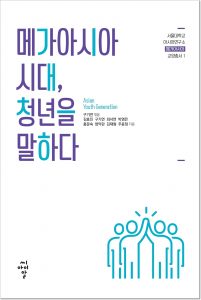
Asian Youth Generation,speaking out on hope, the future, and resistance in Asia
As the global crisis of uncertainty increases, the younger generation is also emerging as a target of the social problems facing each society. The younger generation of Asians are directly experiencing social pressure and burden, and face the emotions of ‘anger’ and ‘hate’ due to strong neo-liberal trends and youth unemployment caused by the global economic crisis. The unprecedented crisis of the COVID-19 pandemic, which began in Asia in early 2020, is creating a more desperate reality for Asian youths, and they are facing a time of crisis in which they have to adapt to changes in the new educational system and labor market.
In particular, it has been diagnosed that the 21st century Korean youth generation is experiencing the characteristics of ‘survivalism’ through the mental dynamism amidst the desires associated with competition and anxiety about survival. In the face of such fierce survivalism in the competitive era, young Asians are unfortunately experiencing a sense of defeat or helplessness.
Even faced with such a precarious situation, the current young generation of Asia is still regarded as ‘Asia’s hope.’ The younger generations of each culture were viewed as a symbol of the ‘future’, in all regions of Asia and throughout time. Across Asia, young people have been regarded as a generation capable of talking about the hopes of the country and even Asia, and we Asians dream of the future through them. In particular, young people in Asia have played a leading role in guiding destiny in the fields of historical change and economic development in Asia. Asian youths are creating new civil society movements and political trends in the face of various desperate situations
Table of Contents
Prologue : Asian Youth Generation,speaking out on hope, the future, and resistance in Asia
Part 1. The Sub-culture of Asian Youths
1. Japan’s young women and ‘Korea’: contemporaneity as a keyword – Hyojin Kim (Institute for Japanese Studies, Seoul National University)
2. Iran’s millennial generation: speaking resistance through popular music – Giyeon Koo (Seoul National University Asia Center)
Part 2. The State and the Youth Generation
3. Malaysia’s Youth Generation, caught in between the problems of reality and new hopes – Seoyeon Choi (Department of Asian Languages and Civilizations, Seoul National University)
4. ‘Kazakhstan’s youth generation’ at the crossroads of frameworks for post-Soviet national identity building and globalization – Yeongeun Park (Asia-Pacific Research Center, Hanyang University)
Part 3. Asian Youth in a Period of Transition
5. Peace too far out of reach: multi-layered attitudes of Myanmar’s youth on development and peace – Moonsuk Hong (International Development School, Busan University of Foreign Studies)
6. Arab Emirates in a period of transition, what kind of youth generation is envisaged? – Ikran Eom (Liberal Arts School, Danguk University)
Part 4. Asia’s Youth, Demonstrating the Power of Resistance and Solidarity
7. The 2019 demonstrations of Hong Kong as seen through the youth generation – Jaehyeong Kim (Department of Culture and Liberal Arts, Korean National Open University)
8. Moving beyond despair to solidarity: a new trend in the social movements of East Asian youths – Yoonjeong Joo (Institute for Social Development and Policy Research, Seoul National University)
